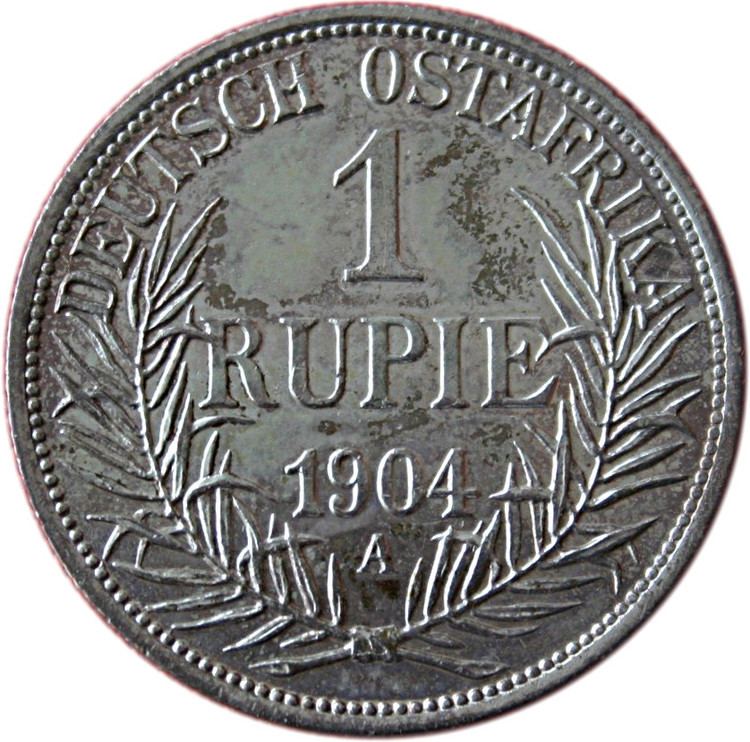 | ||
1/100 Heller(prior to 1904: 64 pesa = 1 rupie) Banknotes 1, 5, 10, 20, 50, 100, 200 500 Rupien Coins ½, 1, 5, 10, 20 Heller, ¼, ½, 1, 2, 15 Rupien Central bank Deutsch-Ostafrikanische Bank | ||
The Rupie was the currency of German East Africa between 1890 and 1916, continuing to circulate in the Tanganyika Territory until 1920.
Contents
History
The Indian rupee was the dominant currency used along the East African coast during the second half of the 19th century where it had marginalized the American gold dollar and the Maria Theresa thaler. The German East Africa Company acquired rights to mint coinage in 1890 and issued rupies which were equivalent to the Indian and Zanzibar rupee. The Company retained its coinage rights even after the takeover of German East Africa by the government later in 1890. In 1904 the German government took over currency matters and established the Ostafrikanische Bank.
The Rupie was initially equivalent to the Indian rupee. Until 1904, it was subdivided into 64 Pesa (equivalent to the Indian pice or paisa). The currency was decimalized on 28 February 1904, with 1 Rupie = 100 Heller. At the same time, a fixed exchange rate of 15 Rupien = 20 German Mark was established.
In 1915 and 1916 in the period of fighting in East Africa during World War I a large series of emergency issues of paper money were issued. 1916 also saw a final issue of coins to pay German led troops, including 15 Rupien coins which contained an equivalent amount of gold from the Sekenke Gold Mine to equal 15 German Marks. Later in 1916 German East Africa was occupied by British and Belgian forces. In Tanganyika, the Rupie circulated alongside the East African rupee (to which it was equal) until 1920, when both were replaced by the East African florin at par. In Burundi and Rwanda, the Belgian Congolese franc replaced the Rupie in 1916.
Coins
In 1890, copper 1 Pesa and silver 1 and 2 Rupie coins were introduced, followed the next year by silver ¼ and ½ Rupie and in 1893 by silver 2 Rupien coins. The silver coins were minted to the same standard as the Indian rupee.
As a consequence of decimalization, bronze ½ and 1 Heller were introduced in 1904, followed by bronze 5 Heller and holed, cupro-nickel 10 Heller in 1908. In 1913, holed, cupro-nickel 5 Heller were introduced.
The 1916 issues were minted at Tabora as a wartime emergency coinage. A total of 302,940 brass 5 Heller were issued. In addition, both copper (325,000) and brass (1,307,760) 20 Heller coins were produced, a quantity that allows them to remain readily available for collectors. In addition 16,198 of the gold 15 Rupien mentioned above were produced. While the smaller valued coins were crudely struck, the gold pieces received fine detail.
